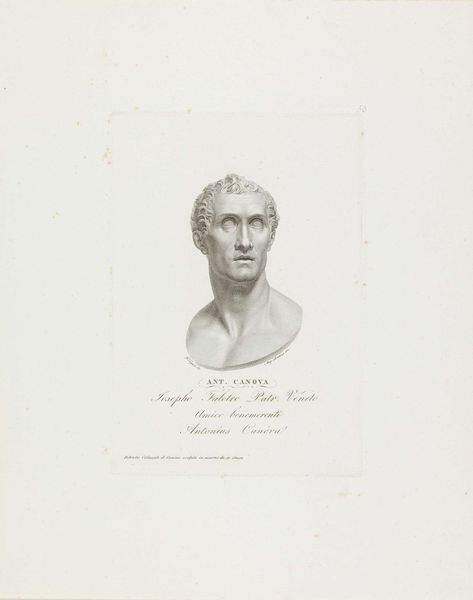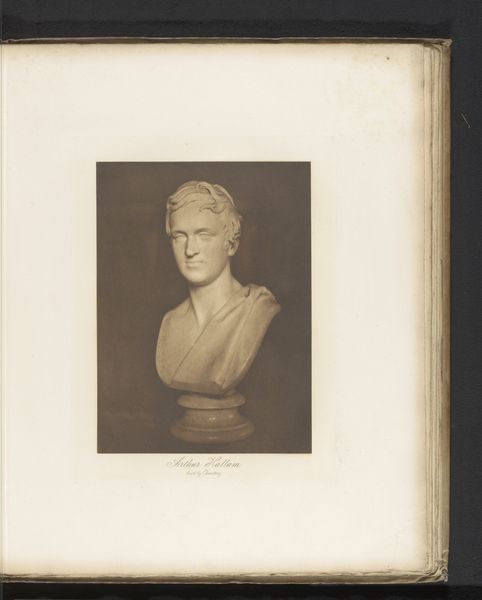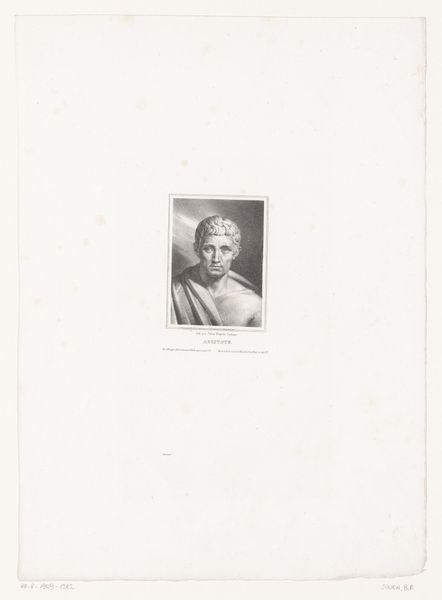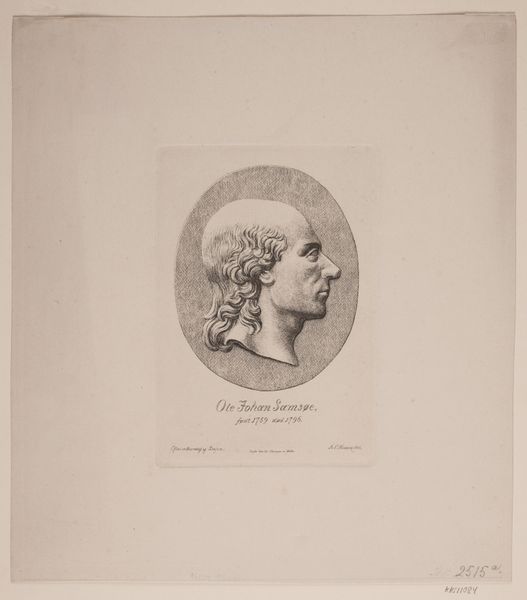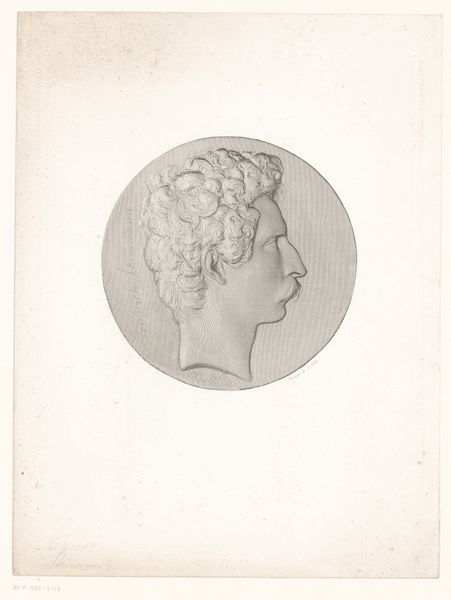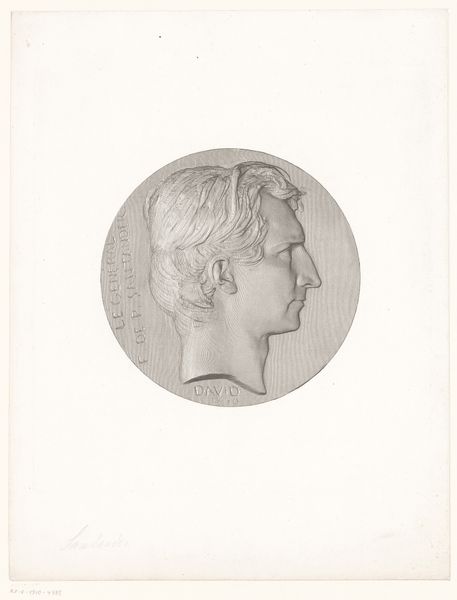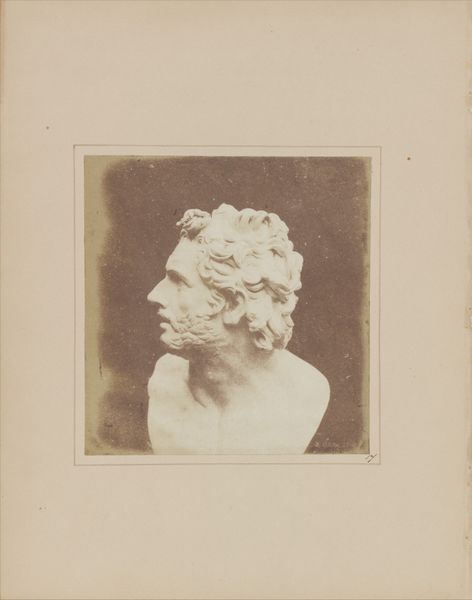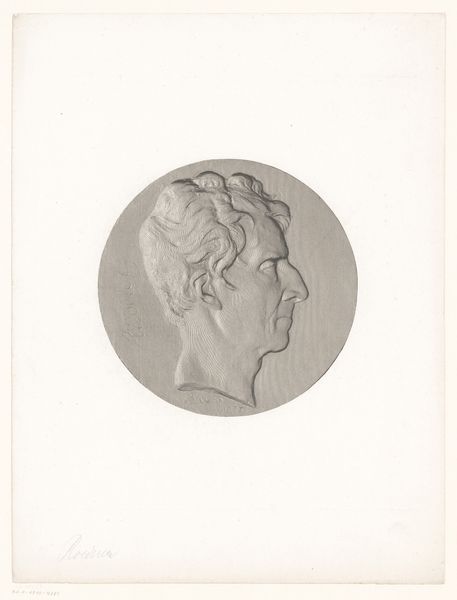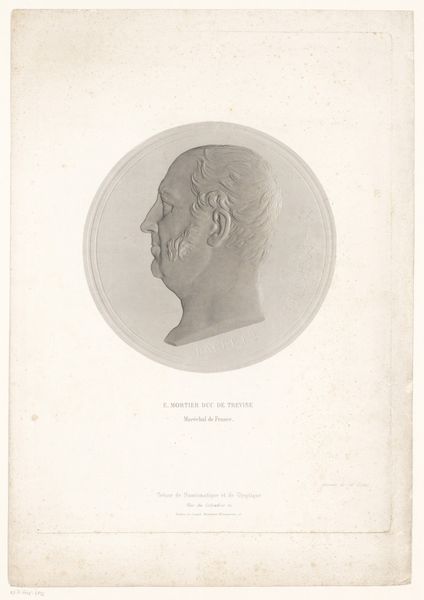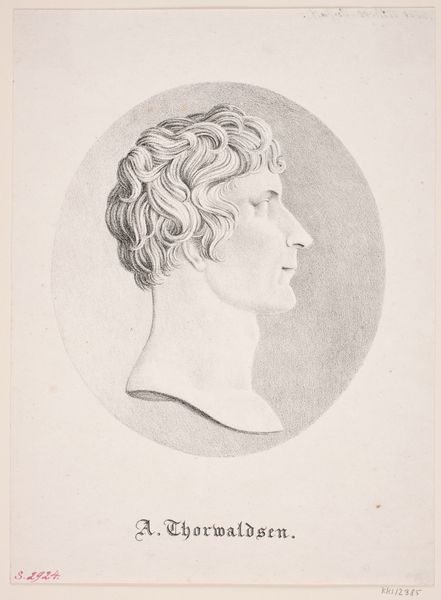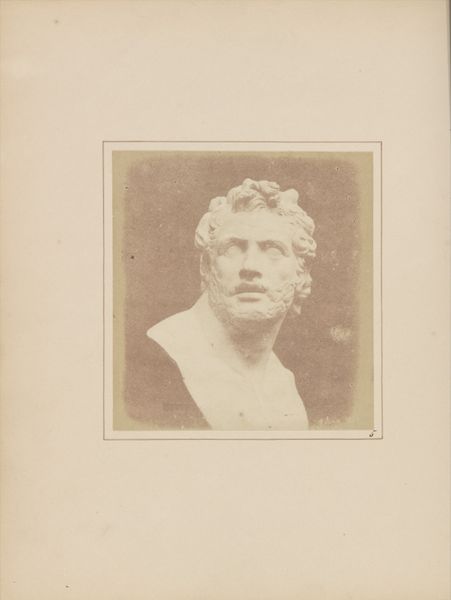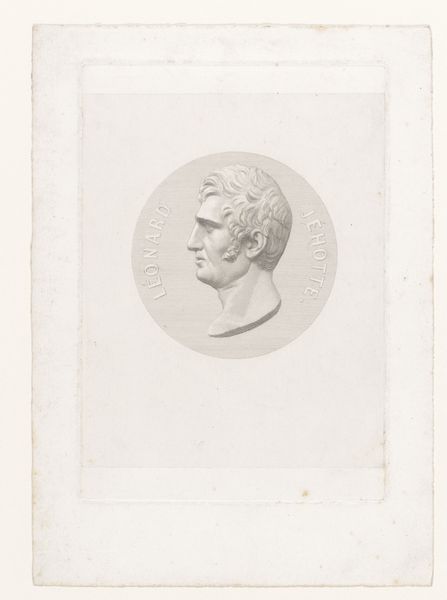
drawing, print, pencil
#
portrait
#
pencil drawn
#
drawing
#
neoclassicism
# print
#
pencil drawing
#
pencil
Dimensions: height 309 mm, width 246 mm
Copyright: Rijks Museum: Open Domain
Curator: Looking at this bust, I'm immediately struck by a sense of stoic serenity. There’s a quiet, classical elegance that resonates deeply. Editor: This is a print, actually. It is called "Portretbuste van Giuseppe Bossi," a Neoclassical drawing made with pencil in 1816 by Bernardino Consorti after Antonio Canova’s original sculpture of the painter Giuseppe Bossi. Canova, famously, produced many marble busts, but Consorti reinterpreted it in pencil and print. It feels distant in reproduction, somehow. Curator: Interesting. That changes things slightly, knowing it's a reproduction. Still, the lines of the bust seem very controlled and confident, which suggests, to me, a cultural admiration for men’s strength during the Neoclassical period. Editor: The artistic skill is evident, yet it does invite consideration of who has the privilege to be memorialized in art, particularly during the Neoclassical period when ideals were very specifically gendered and classed. Here's Bossi—portrayed after a bust by a famous sculptor, Canova, who gave it to Bossi as a symbol of friendship. Who got to make those kinds of moves? Curator: Yes, it speaks of privilege. But more than that, look at the meticulous detail, the precise shading… Consorti skillfully captures the subject’s character. In iconography, this kind of fidelity signifies the subject’s enduring influence; we're asked to continue contemplating his contribution. Editor: Influence, certainly, but influence within very prescribed boundaries. It is revealing that, to be celebrated during the Neoclassical period, artists looked backward to the Greeks. This reverence wasn't available to most women artists who struggled to simply participate in public cultural life, never mind lead it. I wonder what Canova might have memorialized if he had worked during our time. Curator: A provocative question. It seems fitting that such a finely detailed work invites so much scrutiny centuries later. Editor: Agreed. Examining historical choices around representation is itself a step toward equity in the present.
Comments
No comments
Be the first to comment and join the conversation on the ultimate creative platform.
